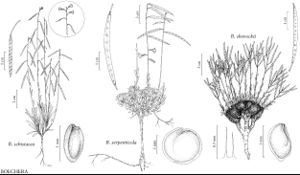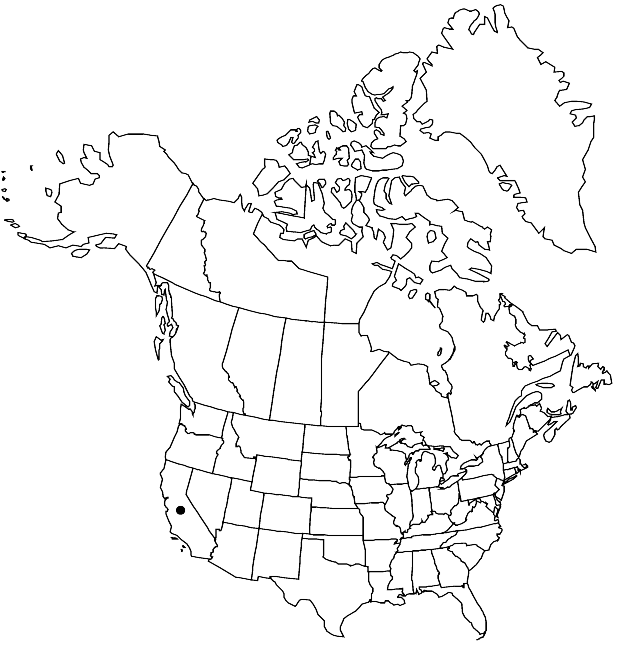Boechera serpenticola
Harvard Pap. Bot. 11: 82. 2006.
Perennials; long-lived; (cespitose); sexual; caudex woody. Stems usually 1 per caudex branch, arising from center of rosette near ground surface, 0.5–1.8 dm, densely pubescent proximally, trichomes short-stalked, 5–8-rayed, 0.1–0.2, sparsely to moderately pubescent distally. Basal leaves: blade narrowly oblanceolate, 1–2 mm wide, margins entire, ciliate along petiole, trichomes (branched), to 0.5 mm, surfaces densely pubescent, trichomes short-stalked, 5–8-rayed, 0.1–0.2 mm. Cauline leaves: 4–14, rarely concealing stem proximally; blade auricles 0.1–0.5 mm, surfaces of distalmost leaves densely pubescent. Racemes 10–20-flowered, unbranched. Fruiting pedicels divaricate-descending or horizontal, nearly straight, 3–7 mm, pubescent, trichomes appressed, branched. Flowers ascending at anthesis; sepals pubescent; petals purple, 6–8 × 1.5–2.5 mm, glabrous; pollen ellipsoid. Fruits usually divaricate-descending or horizontal, rarely widely pendent, not appressed to rachis, not secund, straight or slightly curved, edges parallel, 3–4.5 cm × 2.5–3 mm; valves sparsely pubescent to glabrate; ovules 20–24 per ovary; style 1.5–2 mm. Seeds uniseriate, 2–2.5 × 1.5–1.8 mm; wing continuous, to 0.2 mm wide.
Phenology: Flowering Mar–Jun.
Habitat: Serpentine ridges and talus
Elevation: ca. 1100 m
Discussion
Boechera serpenticola has been confused with B. subpinnatifida but is easily distinguished by its entire (versus subpinnatifid to dentate) leaves, shorter (6–8 versus 9–14 mm) petals, and longer (1.5–2 versus 0.5–1 mm) styles. It is known only from Shasta and Trinity counties in north-central California.
Selected References
None.
Lower Taxa
"elongated" is not a number."thick" is not a number."dm" is not declared as a valid unit of measurement for this property.

